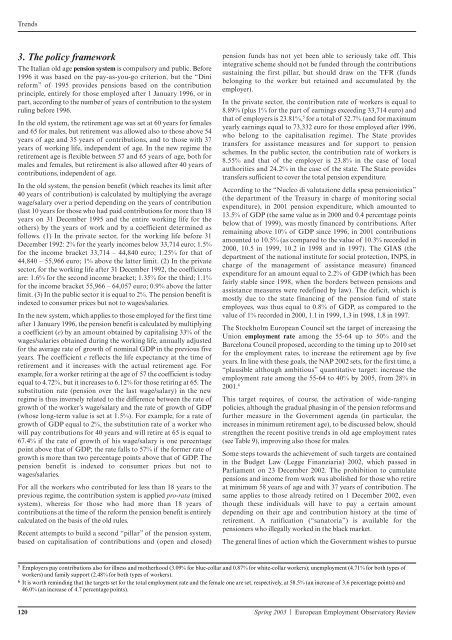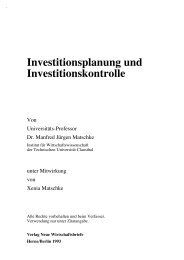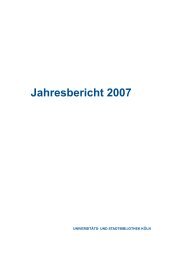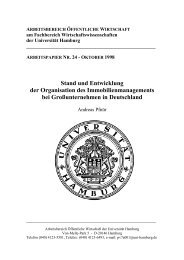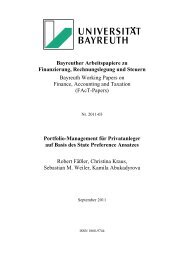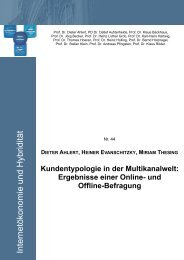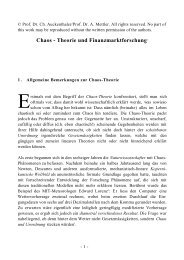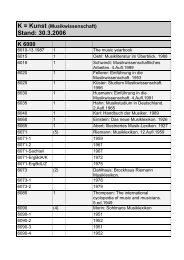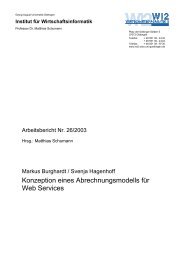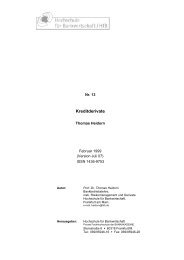FRANCE The
FRANCE The
FRANCE The
Create successful ePaper yourself
Turn your PDF publications into a flip-book with our unique Google optimized e-Paper software.
Trends<br />
3. <strong>The</strong> policy framework<br />
<strong>The</strong> Italian old age pension system is compulsory and public. Before<br />
1996 it was based on the pay-as-you-go criterion, but the “Dini<br />
reform” of 1995 provides pensions based on the contribution<br />
principle, entirely for those employed after 1 January 1996, or in<br />
part, according to the number of years of contribution to the system<br />
ruling before 1996.<br />
In the old system, the retirement age was set at 60 years for females<br />
and 65 for males, but retirement was allowed also to those above 54<br />
years of age and 35 years of contributions, and to those with 37<br />
years of working life, independent of age. In the new regime the<br />
retirement age is flexible between 57 and 65 years of age, both for<br />
males and females, but retirement is also allowed after 40 years of<br />
contributions, independent of age.<br />
In the old system, the pension benefit (which reaches its limit after<br />
40 years of contribution) is calculated by multiplying the average<br />
wage/salary over a period depending on the years of contribution<br />
(last 10 years for those who had paid contributions for more than 18<br />
years on 31 December 1995 and the entire working life for the<br />
others) by the years of work and by a coefficient determined as<br />
follows. (1) In the private sector, for the working life before 31<br />
December 1992: 2% for the yearly incomes below 33,714 euro; 1.5%<br />
for the income bracket 33,714 – 44,840 euro; 1.25% for that of<br />
44,840 – 55,966 euro; 1% above the latter limit. (2) In the private<br />
sector, for the working life after 31 December 1992, the coefficients<br />
are: 1.6% for the second income bracket; 1.35% for the third; 1.1%<br />
for the income bracket 55,966 – 64,057 euro; 0.9% above the latter<br />
limit. (3) In the public sector it is equal to 2%. <strong>The</strong> pension benefit is<br />
indexed to consumer prices but not to wages/salaries.<br />
In the new system, which applies to those employed for the first time<br />
after 1 January 1996, the pension benefit is calculated by multiplying<br />
a coefficient (e) by an amount obtained by capitalising 33% of the<br />
wages/salaries obtained during the working life, annually adjusted<br />
for the average rate of growth of nominal GDP in the previous five<br />
years. <strong>The</strong> coefficient e reflects the life expectancy at the time of<br />
retirement and it increases with the actual retirement age. For<br />
example, for a worker retiring at the age of 57 the coefficient is today<br />
equal to 4.72%, but it increases to 6.12% for those retiring at 65. <strong>The</strong><br />
substitution rate (pension over the last wage/salary) in the new<br />
regime is thus inversely related to the difference between the rate of<br />
growth of the worker’s wage/salary and the rate of growth of GDP<br />
(whose long-term value is set at 1.5%). For example, for a rate of<br />
growth of GDP equal to 2%, the substitution rate of a worker who<br />
will pay contributions for 40 years and will retire at 65 is equal to<br />
67.4% if the rate of growth of his wage/salary is one percentage<br />
point above that of GDP; the rate falls to 57% if the former rate of<br />
growth is more than two percentage points above that of GDP. <strong>The</strong><br />
pension benefit is indexed to consumer prices but not to<br />
wages/salaries.<br />
For all the workers who contributed for less than 18 years to the<br />
previous regime, the contribution system is applied pro-rata (mixed<br />
system), whereas for those who had more than 18 years of<br />
contributions at the time of the reform the pension benefit is entirely<br />
calculated on the basis of the old rules.<br />
Recent attempts to build a second “pillar” of the pension system,<br />
based on capitalisation of contributions and (open and closed)<br />
pension funds has not yet been able to seriously take off. This<br />
integrative scheme should not be funded through the contributions<br />
sustaining the first pillar, but should draw on the TFR (funds<br />
belonging to the worker but retained and accumulated by the<br />
employer).<br />
In the private sector, the contribution rate of workers is equal to<br />
8.89% (plus 1% for the part of earnings exceeding 33,714 euro) and<br />
that of employers is 23.81%, 5 for a total of 32.7% (and for maximum<br />
yearly earnings equal to 73,332 euro for those employed after 1996,<br />
who belong to the capitalisation regime). <strong>The</strong> State provides<br />
transfers for assistance measures and for support to pension<br />
schemes. In the public sector, the contribution rate of workers is<br />
8.55% and that of the employer is 23.8% in the case of local<br />
authorities and 24.2% in the case of the state. <strong>The</strong> State provides<br />
transfers sufficient to cover the total pension expenditure.<br />
According to the “Nucleo di valutazione della spesa pensionistica”<br />
(the department of the Treasury in charge of monitoring social<br />
expenditure), in 2001 pension expenditure, which amounted to<br />
13.5% of GDP (the same value as in 2000 and 0.4 percentage points<br />
below that of 1999), was mostly financed by contributions. After<br />
remaining above 10% of GDP since 1996, in 2001 contributions<br />
amounted to 10.5% (as compared to the value of 10.3% recorded in<br />
2000, 10.5 in 1999, 10.2 in 1998 and in 1997). <strong>The</strong> GIAS (the<br />
department of the national institute for social protection, INPS, in<br />
charge of the management of assistance measure) financed<br />
expenditure for an amount equal to 2.2% of GDP (which has been<br />
fairly stable since 1998, when the borders between pensions and<br />
assistance measures were redefined by law). <strong>The</strong> deficit, which is<br />
mostly due to the state financing of the pension fund of state<br />
employees, was thus equal to 0.8% of GDP, as compared to the<br />
value of 1% recorded in 2000, 1.1 in 1999, 1.3 in 1998, 1.8 in 1997.<br />
<strong>The</strong> Stockholm European Council set the target of increasing the<br />
Union employment rate among the 55-64 up to 50% and the<br />
Barcelona Council proposed, according to the timing up to 2010 set<br />
for the employment rates, to increase the retirement age by five<br />
years. In line with these goals, the NAP 2002 sets, for the first time, a<br />
“plausible although ambitious” quantitative target: increase the<br />
employment rate among the 55-64 to 40% by 2005, from 28% in<br />
2001. 6<br />
This target requires, of course, the activation of wide-ranging<br />
policies, although the gradual phasing in of the pension reforms and<br />
further measure in the Government agenda (in particular, the<br />
increases in minimum retirement age), to be discussed below, should<br />
strengthen the recent positive trends in old age employment rates<br />
(see Table 9), improving also those for males.<br />
Some steps towards the achievement of such targets are contained<br />
in the Budget Law (Legge Finanziaria) 2002, which passed in<br />
Parliament on 23 December 2002. <strong>The</strong> prohibition to cumulate<br />
pensions and income from work was abolished for those who retire<br />
at minimum 58 years of age and with 37 years of contribution. <strong>The</strong><br />
same applies to those already retired on 1 December 2002, even<br />
though these individuals will have to pay a certain amount<br />
depending on their age and contribution history at the time of<br />
retirement. A ratification (“sanatoria”) is available for the<br />
pensioners who illegally worked in the black market.<br />
<strong>The</strong> general lines of action which the Government wishes to pursue<br />
5 Employers pay contributions also for illness and motherhood (3.09% for blue-collar and 0.87% for white-collar workers); unemployment (4.71% for both types of<br />
workers) and family support (2.48% for both types of workers).<br />
6 It is worth reminding that the targets set for the total employment rate and the female one are set, respectively, at 58.5% (an increase of 3.6 percentage points) and<br />
46.0% (an increase of 4.7 percentage points).<br />
120 Spring 2003 | European Employment Observatory Review


